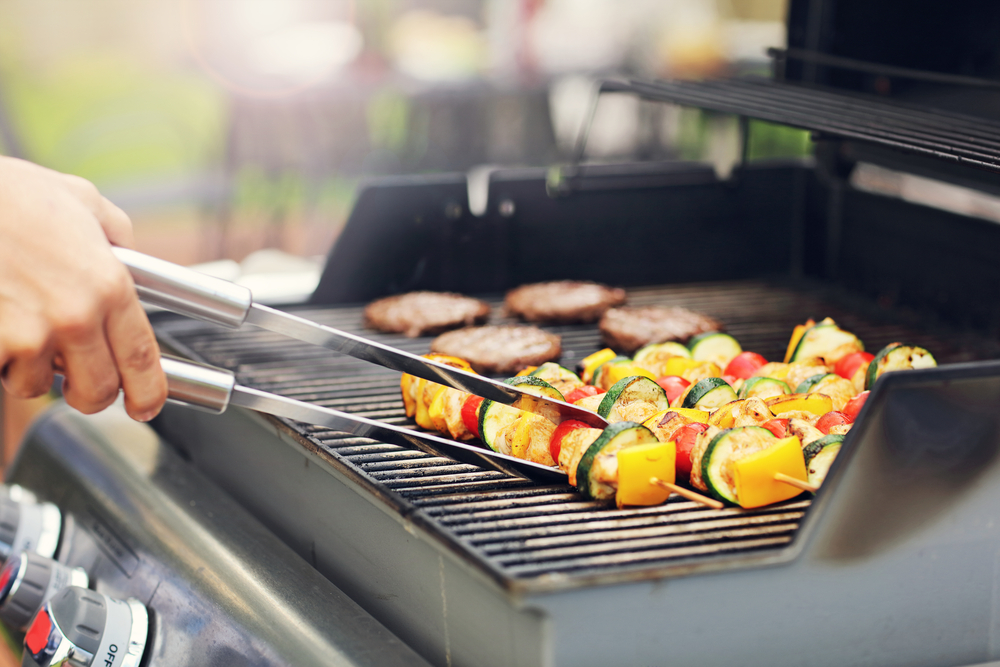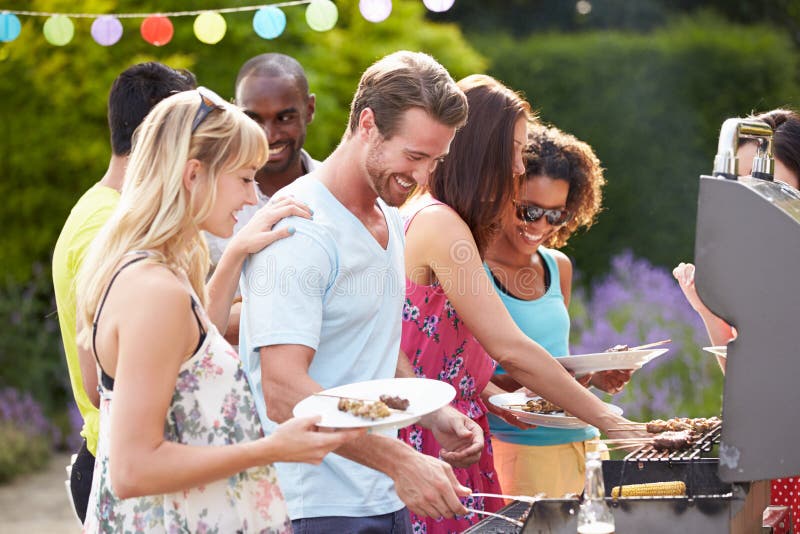==================
A Caveat and Affiliates
First off, a little caveat: within my articles you will find affiliate links, meaning if you buy them, I get a small commission. Your cost is not affected. In addition, I am an Amazon Associate and I earn from qualifying purchases on Amazon.
And yes, if I say that I recommend a product here, it means I truly believe it is a good product. I refuse to recommend any product that I have not researched and believe to be a good value.
Even better, I provide you with a very clear picture of the product, it’s use, and the probable value.
Earning your trust is important to me. I run this website myself and the commissions and donations help support the site.
Sound reasonable and fair enough? Let’s continue to the article.
==================
Gas Grilling Tips and Techniques to Become a Grill Master
Gas grilling is a great way to cook delicious food. Whether you are an experienced gas griller or just starting out, there are many tips and techniques to use to help improve the way you grill. In this blog post, we will share with you some of our favorite tips for how to use gas grills effectively
Grilling is one of the best ways to make your food taste better, and it’s a great way to get together with family and friends. Everyone loves the smell of grilling! But not everyone knows that there are different types of gas grills on the market, or how each type works differently. We’ve highlighted our top 10 gas grilling tips and techniques for you below so you can learn more about what makes these grills unique, as well as how to use them properly!
Expert foodies often say the heart of grilling lies in grilling techniques. However, what separates the master grillers from the masses is simply that the experts understand how to manage their grill. Of course, using great recipes is important. But techniques matter most.
Follow these 10 gas grilling tips and techniques. Soon your family and friends will call you a true BBQ master.
1. PREHEAT THE GRILL
We understand. You want to get the grilling underway. But taking a few minutes to prepare helps you avoid many problems.
So, start the grill up, close the lid, and preheat for 10 to 15 minutes.
You are aiming for a temperature of about 500°f (260°C). This usually happens with all the gas burners set on high. At this temperature, you ensure the grates are clean. If you see any bits of leftover food, brush them off.
A big benefit to this preheating is that it helps prevent food from sticking to the grate. It also ensures the grate gets hot enough to sear properly.
2. KEEP YOUR GRILL CLEAN
We mentioned using heat to loosen those bits of food. It’s important to note that when bits of food has stuck to your cooking grate, getting the grill hot allows you to easily clean it with a stainless steel brush. A bonus to this step is it also prevents your food from sticking.
Special Note: The stainless steel brush offers good service, but needs replacing when you being to find loose bristles on cooking grates or brush.
3. KEEP THE GRILL LID DOWN
When you cook inside, you keep the oven door closed except for that occasional quick check. Your grill needs the same technique. After all, it’s an outdoor oven in many ways. Need more reasoning? Consider these 4 important reasons why your grill lid should be closed as much as possible.
- A closed lid keeps the grates hot enough to sear the food.
- When the lid is closed, the heat stays in. This speeds up the cooking time and prevents the food from drying out.
- Grilling meat? Keep the lid closed to trap the smokiness that develops when fat and juices vaporize in the grill.
- Keeping the lid closed prevents flare-ups by limiting oxygen.
4. GRILLING TIME AND TEMPERATURE
Your goal is food grilled to perfection. To that end, closely monitor your time and grilling temperature to avoid overcooking your food. If you will be serving at a specific time, plan your time accordingly.
While ovens usually have a timer, your grill probably doesn’t. Get a portable timer to use and keep by your grill. Or, set your smartwatch. With a timer, you are less tempted to keep opening the lid to check on the progress.
Note: Grilling in a colder climate or in a higher altitude, increases the cooking times. Also, strong winds lower a gas grill’s temperature. (Interestingly, strong winds actually raise the temperature of a charcoal grill!)
5. DIRECT VS. INDIRECT HEAT GRILLING
Should you use direct heat or indirect heat to grill your favorite foods? It depends.
Direct heat (when the fire is directly below the food) performs best for relatively small, tender pieces of food that cook in 20 minutes or less. Think small meats, vegetables, and other quick-cooking choices.
Indirect heat (when the fire is on either side of the food) works best for larger, tougher cuts of meat that require more than 20 minutes of cooking.
6. MAINTAINING GRILL TEMPERATURES
Good gas grills are designed to give you complete control over the heat inside of the grill. By having a consistent, reliable heat source and proper venting, the grill maintains low or high temperatures effectively.
Gas Grilling Tips and Techniques include knowing your grill parts and using them properly
Dampers: Similar to a fireplace or woodstove, the dampers on the top and bottom of the grill control the airflow inside the grill. The more air flowing into the grill, the hotter the fire will grow and the more gas it requires to maintain the temperature. Close the top vent as much as halfway and keep the lid on as much as possible to keep your grill performing efficiently without wasting fuel. However, leave the bottom vent open whenever you are grilling to provide enough oxygen to keep the fire burning.
Gas grills have individual control knobs so that allow you to easily regulate the heat and create different grilling zones. Using these controls allows you to easily maintain heat levels as low as 200˚f to over 550°f. They also allow you to shift from direct to indirect in minutes.
7. TAME THE FLAME
Avoid burning your food or charing the surface and undercooking. Too many flare-ups burn your food. As much as you might want to check on the food frequently, keep the lid on as much as possible. The closed lid limits the amount of oxygen inside the grill, which helps limit any flare-ups.
Sometimes your marinade or the included fat causes flare-ups. If the flames seem to be getting out of control, move the food over indirect heat temporarily, until they die down. Once those flames have settled, move the food back.
8. CARAMELIZATION IS KEY
Most people love grilled food for it’s seared flavors. Chefs know this as caramelization which is simply the oxidation of sugars. Caramelization creates a nutty flavor, sweetening the taste, and browning the food.
Creating this effect requires patience! Use the right level of heat and resist the temptation to turn food too often. That’s right, less is more for caramelization. Let the grill do the work while you enjoy conversing with family and friends. While it is caramelizing, it creates literally hundreds of flavors and aromas. Your taste buds will thank you.
Note: As a general rule, turn food only once.
9. Wood Chips for Gas Grills?
Yes, please! But make sure you use them properly. If your grill is equipped with a smoker box, use that for your wood chips. But if you don’t have that accessory, just create one! Use aluminum foil to create a pouch for your wood chips. Wrap them loosely, but do seal the pouch.
Charcoal grillers know to soak their wood chips before adding to the grill to prevent a fire. While you can soak them for your gas grill, it’s not necessary unless your grill instructions include that step before adding to the smoker box.
Summary
Using our Top 10 Gas Grilling Tips and Techniques, your next cookout will be a memorable one for your family and friends. Our tips also help you enjoy the gathering even more as you worry less about the food prep, knowing the best techniques to use.
Read More

